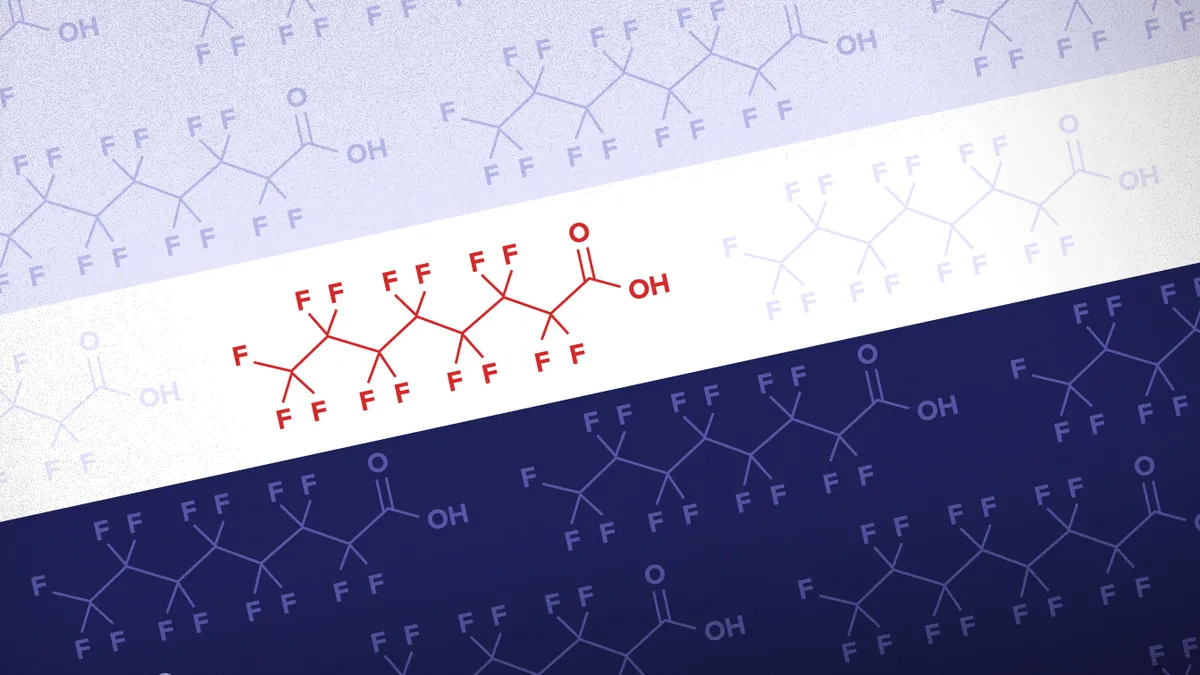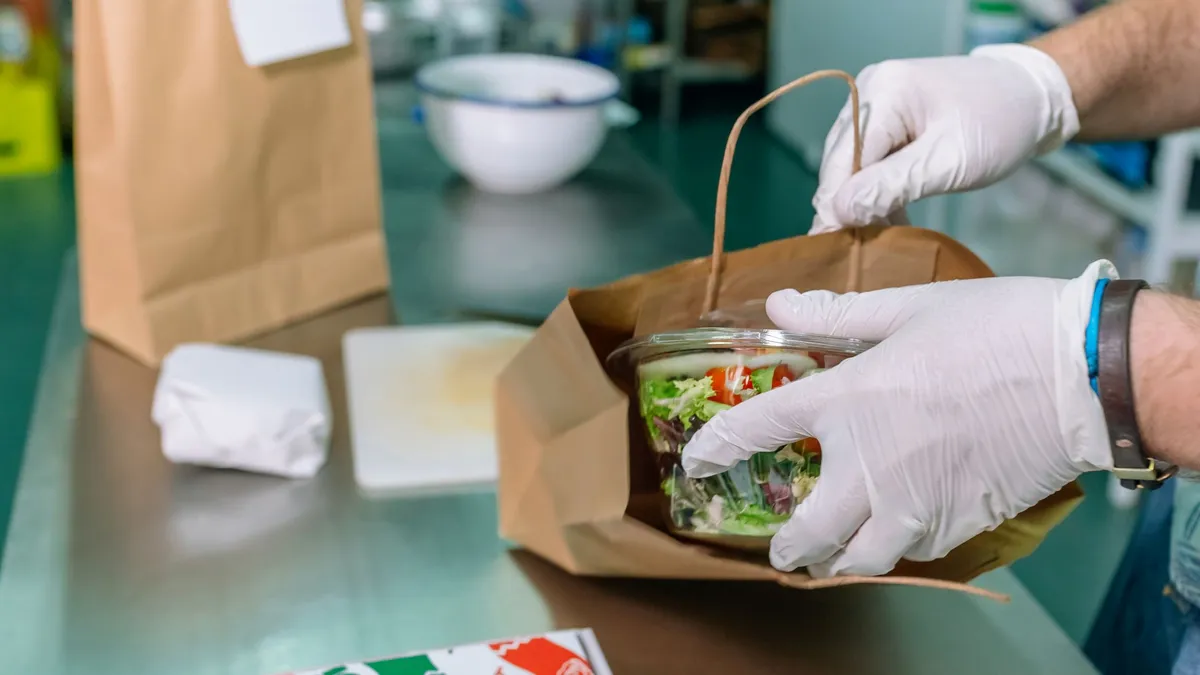Dive Brief:
- Health and environment regulators in Canada recently released an updated draft report on the state of per- and polyfluoroalkyl substances, a class of “forever chemicals” known as PFAS. It notes that food packaging materials, as well as oil or water repellents or grease-proof coating used on packaging, are among the products where PFAS are found.
- The government also released a revised risk management scope document for PFAS. As the government considers how to tighten regulation, it’s also exploring voluntary actions. These may include improved product labeling on chemicals of concern, engaging with industry on potential voluntary phaseouts and “working with North American trading partners on alternatives assessment and informed substitution of PFAS.”
- Both the state of PFAS report and the risk management scope document are open for comments until Sept. 11. Also in July, the government issued a notice soliciting certain information on PFAS from manufacturers by Jan. 29, 2025, explained North American law firm McMillan in a bulletin.
Dive Insight:
Governments continue to develop PFAS regulations that are poised to impact companies that produce materials for packaging, design packaging or that receive it downstream.
With this recent work, Canada is expected to publish a final version of regulations later this year to tighten restrictions under the Canadian Environmental Protection Act, McMillan noted. In its management of food packaging specifically, Health Canada has issued letters of no objection, a form of safety evaluation, concerning 16 polymeric PFAS, according to the report.
A previous draft version of the state of PFAS report — meant to offer “a qualitative assessment of the fate, sources, occurrence, and potential impacts of PFAS on the environment and human health to inform decision-making on PFAS in Canada” — was originally released in May 2023. The updated draft incorporates feedback from comments and other newfound information. The Forest Products Association of Canada, Canadian Beverage Association and American Chemistry Council were among the groups that commented.
Environment and Climate Change Canada and Health Canada ultimately recommend “a precautionary, class-based approach to addressing PFAS” to mitigate adverse effects to the environment and human health.
Canada’s report details the state of regulation in other countries, including the United States. It notes that numerous states — California, Maine, Minnesota and several others — have enacted their own laws prohibiting PFAS in food packaging. At the federal level, it notes that the U.S. Food and Drug Administration spurred a voluntary phaseout of certain PFAS-containing grease-proofing substances used on paper-based food packaging.
Only some PFAS are currently subject to risk management controls in Canada. The government previously proposed further restrictions.
The report also notes PFAS in packaging pass downstream, including through composting of PFAS-containing food packaging, as well as through “treated” paper and paperboard entering recycled paper feedstock. “Compost made from PFAS-containing food packaging, single-use paper products, or food waste is expected to be contaminated with PFAS,” it states.
Other data cited in the report includes an estimate that 2% of Canadian food packaging contains intentionally added PFAS. “Given the known use of polymeric PFAS in paper/paperboard food packaging, it is expected that some PFAS will be detected in paper and paperboard food packaging on the retail market,” the report says.
Additionally, the report points out research that found detectable levels of fluorine in one-third of paper and paperboard food wrappers and related food packaging at fast-food restaurants from various regions of the U.S. Fluorine was more commonly found in grease-proof products versus those not intended for food contact. It also cited a study in which nearly half of fast food packaging in samples from Toronto contained detectable levels of total fluorine; the highest concentration was found in molded fiber bowls.











